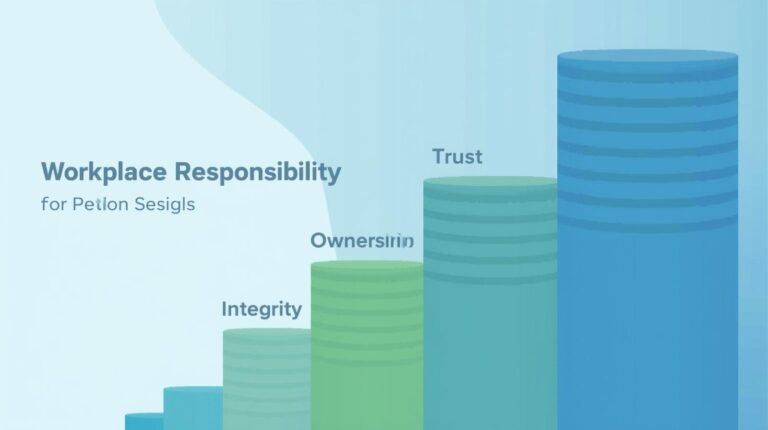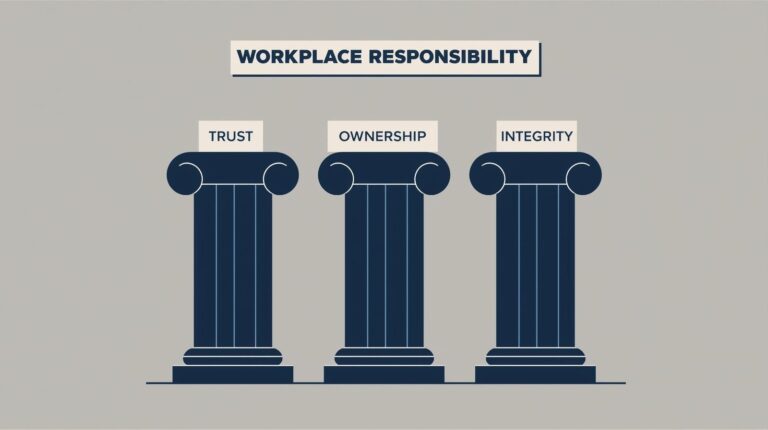Accountability in Leadership: Why It Starts at the Top
When you think about accountability in the workplace, you might picture employees meeting deadlines, teams collaborating smoothly, or individuals owning their mistakes. But here’s the hard truth: if leaders aren’t accountable, no one else will be.
Leadership accountability isn’t just a nice-to-have. It’s the foundation of trust, performance, and culture in any organization. When leaders model accountability, they create a ripple effect that flows through managers, employees, and entire teams. When they don’t, the opposite is true—standards slip, morale dips, and accountability collapses into a culture of excuses.
So, what does accountability in leadership look like? Why does it matter so much? And how can leaders strengthen their own accountability while also fostering it in others? Let’s break it down.
What Is Leadership, Really?
At its core, leadership is influence. It’s not about job titles, corner offices, or authority on paper—it’s about the ability to guide people toward a shared goal.
An accountable leader is one who:
Sets clear expectations.
Follows through on promises.
Admits mistakes and learns from them.
Creates an environment where employees feel safe to do the same.
Leadership isn’t about being perfect—it’s about being responsible. Accountability is what separates leaders people want to follow from leaders people have to tolerate.
The Role of the Organization
Leadership accountability doesn’t happen in a vacuum. Organizations themselves play a crucial role in setting the tone.
Here’s how:
Values and culture: If an organization’s stated values emphasize integrity, ownership, and transparency, leaders are more likely to model those behaviors.
Systems and structures: Accountability should be built into performance reviews, goal-setting frameworks, and feedback processes. Without systems, accountability is inconsistent.
Board and executive oversight: Senior leaders need to be held accountable by their peers and governance structures. If the “top of the top” isn’t accountable, it’s unrealistic to expect middle managers or employees to be.
Organizations that want accountable leaders must back up words with structures. Otherwise, “accountability” remains a buzzword instead of a standard.
The Role of the Manager
Middle managers often carry the heaviest load when it comes to accountability. They sit between organizational strategy and frontline execution, responsible for turning broad goals into daily action.
For managers, accountability means:
Owning team performance. Successes and failures both rest with the manager, even if individual contributions vary.
Modeling behavior. A manager who misses deadlines, plays favorites, or avoids tough conversations cannot expect accountability from their team.
Coaching instead of blaming. Accountability isn’t about punishing employees for mistakes—it’s about guiding them to learn and improve.
Managers who embrace accountability earn the respect of their teams. Those who dodge it quickly lose credibility.
The Role of the Employee
It’s tempting to think accountability only flows downward, from leaders to employees. But the relationship works both ways. Employees also play a role in holding leaders accountable.
An accountable employee:
Communicates honestly with their manager, even when it’s uncomfortable.
Raises concerns when expectations are unclear or values aren’t being upheld.
Demonstrates personal accountability, setting a standard for peers and leaders alike.
In healthy organizations, accountability flows up, down, and sideways. Leaders set the tone, but employees reinforce it through their own behavior.
Strengthening Leadership Accountability
So, how can leaders build their own accountability muscles? Here are five practical steps:
Lead by example. Nothing kills accountability faster than hypocrisy. If leaders expect punctuality, they need to show up on time. If they demand transparency, they must share openly themselves.
Set and communicate clear goals. Accountability thrives on clarity. Leaders should define what success looks like and ensure everyone understands their role in achieving it.
Embrace feedback. Leaders who avoid criticism send the message that accountability is for others, not them. Seek feedback regularly—from employees, peers, and superiors—and act on it.
Own mistakes publicly. When leaders admit errors, they model courage and humility. It signals to employees that accountability is about growth, not punishment.
Balance consequences with support. Accountability doesn’t mean being harsh. It means being consistent. Leaders should recognize achievements while addressing underperformance constructively.
Case Study: Two Leaders, Two Outcomes
Consider two department heads tasked with rolling out a new digital tool across their teams.
Leader A sets vague expectations, avoids check-ins, and blames employees when adoption is slow. Morale dips, trust erodes, and the project stalls.
Leader B clarifies goals, checks in weekly, owns up when training materials are delayed, and supports employees struggling with the tool. Adoption is smooth, trust grows, and the project succeeds.
Both leaders had the same resources. The difference was accountability.
Why Leadership Accountability Matters
Let’s be blunt: accountability at the leadership level is the single biggest predictor of whether accountability will take root across the organization.
Here’s why:
It shapes culture. Employees take cues from leaders. If leaders cut corners, employees assume it’s acceptable.
It drives performance. Teams with accountable leaders deliver results consistently because expectations are clear and trust is strong.
It builds trust. Employees don’t expect leaders to be flawless—but they do expect them to be honest. Accountability builds credibility.
It retains talent. People leave managers, not companies. Leaders who dodge accountability drive away good employees.
The Challenges of Leadership Accountability
Of course, holding leaders accountable is easier said than done. Common challenges include:
Fear of vulnerability. Leaders may feel that admitting mistakes undermines their authority.
Pressure from above. When leaders are stretched thin by unrealistic goals, accountability can feel like an added burden.
Lack of oversight. Senior executives may operate without enough checks and balances, creating blind spots.
The solution isn’t to lower standards—it’s to build support systems that make accountability possible, sustainable, and fair.
Building an Accountability Culture from the Top Down
If you want accountability to thrive across your organization, it must start at the top. Here’s how:
Embed accountability in leadership development. Make it a non-negotiable skill, not an optional soft skill.
Reward accountable behavior. Recognize leaders who own outcomes, admit mistakes, and create safe spaces for employees to do the same.
Hold senior executives accountable. Use boards, peer reviews, and transparent reporting to ensure no leader is “above accountability.”
When employees see accountability modeled by those in power, they follow suit. When they see it ignored, they disengage.
Final Thoughts
Accountability in leadership isn’t about perfection. It’s about responsibility. Leaders who own their actions, keep their commitments, and admit their mistakes create an environment where others feel empowered to do the same.
Without leadership accountability, organizations struggle with trust, culture, and performance. With it, they thrive.
So if you’re a leader—or aspiring to become one—ask yourself: Am I modeling the accountability I want to see in my team? Because at the end of the day, accountability doesn’t start with policies or systems. It starts with you.



